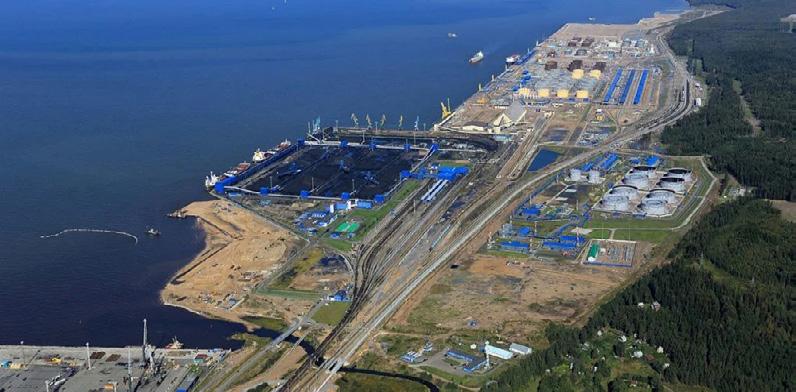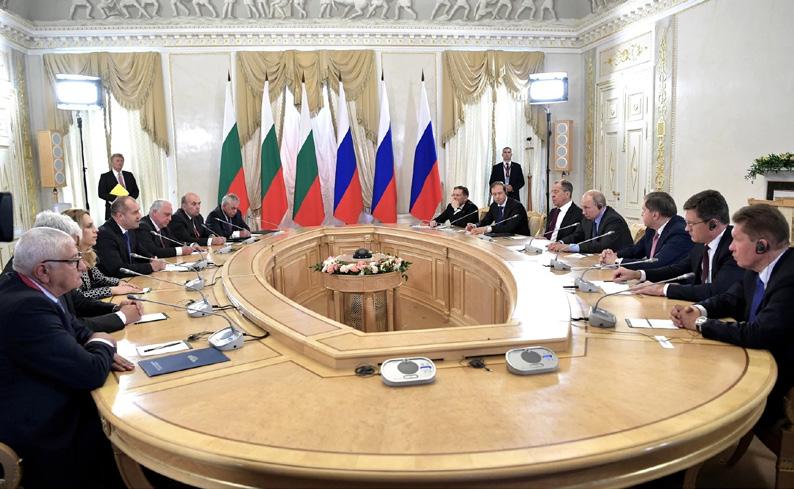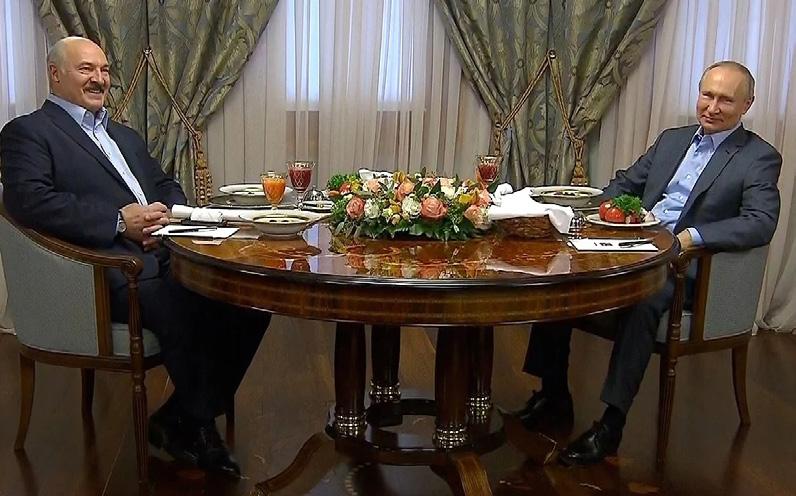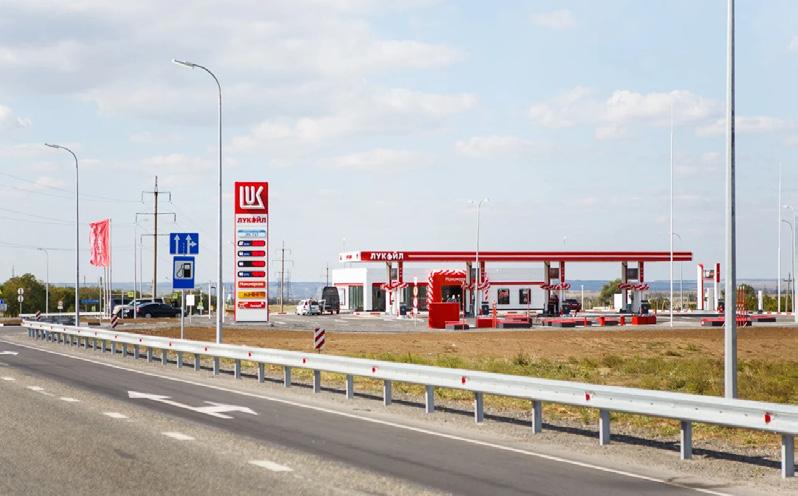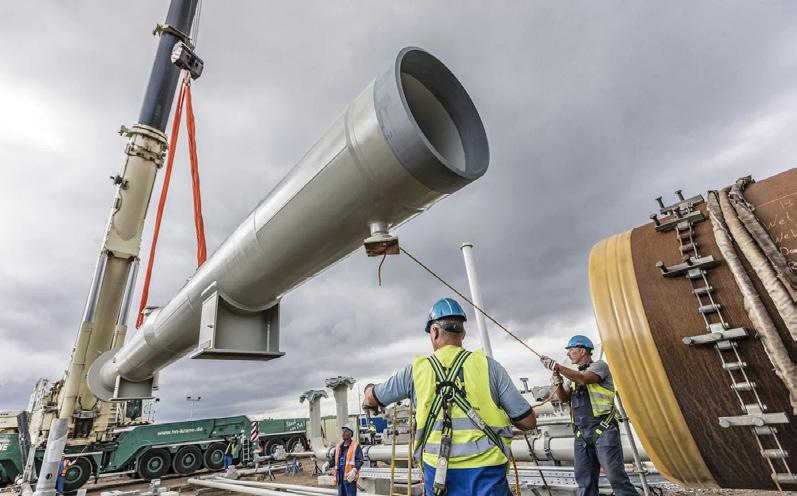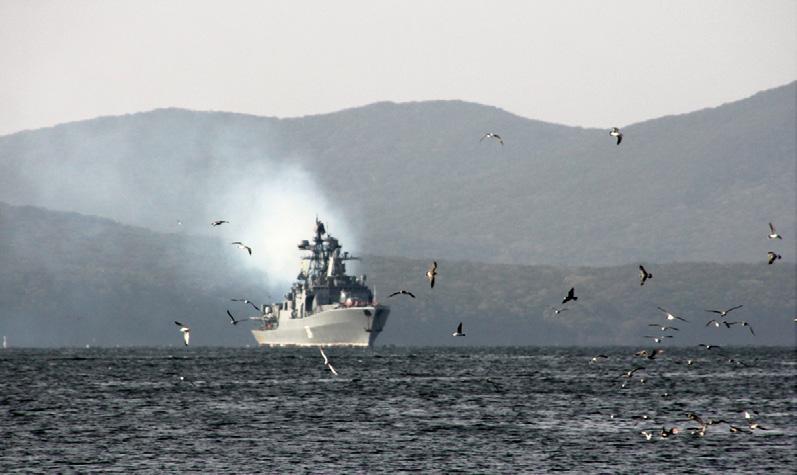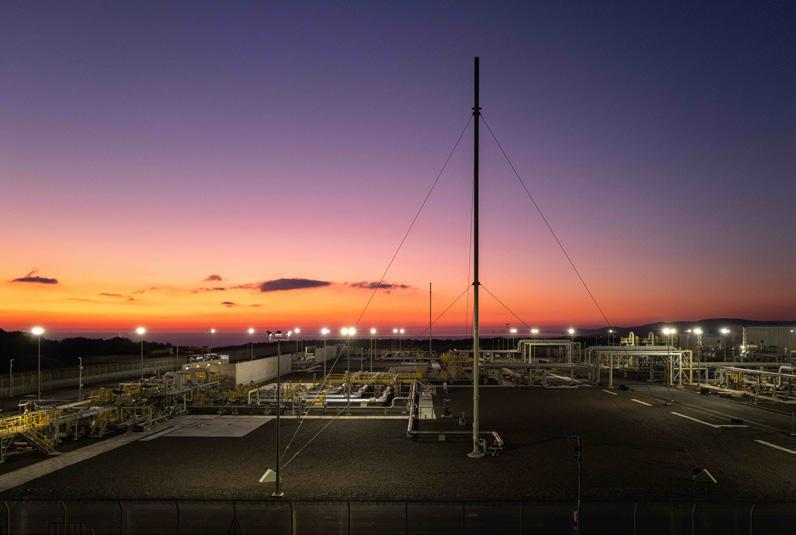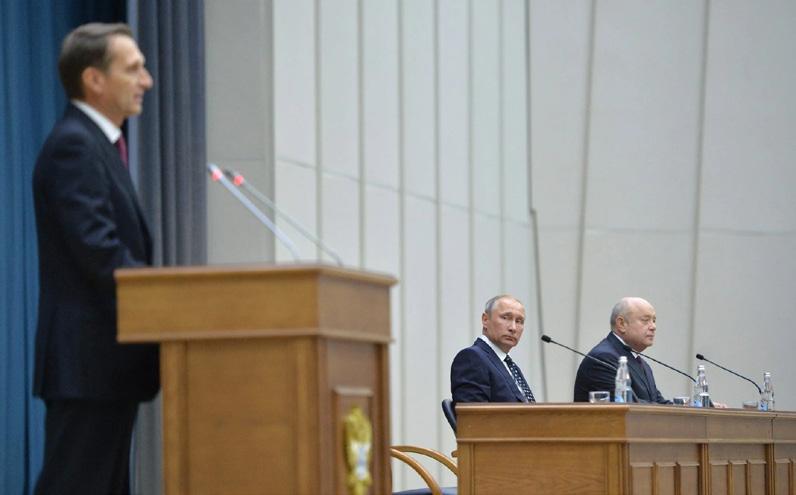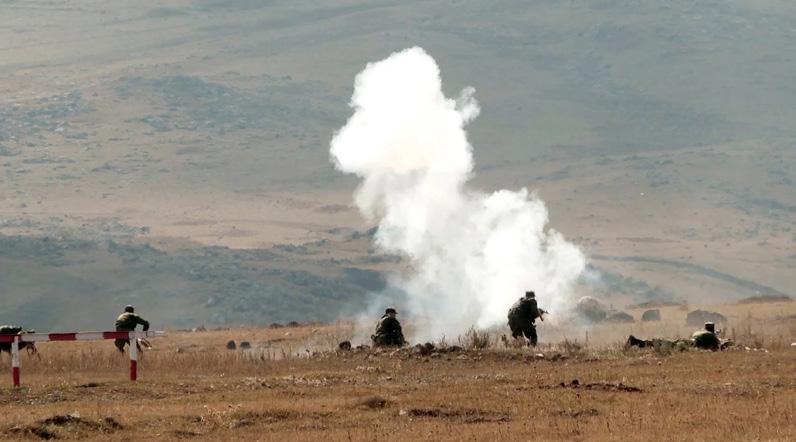
3 minute read
KAVKAZ-2020: RUSSIA’S BIGGEST MILITARY EXERCISE THIS YEAR
delays, though. Eventually, Bulgaria awarded a contract to the Saudi-led group Arkad whose representative and Saudi Deputy Minister of Oil Production Abdullah Al-Saadoun accompanied Borisov during the inspection. Wholly controlled by Bulgaria, the project will become operational by the end of the year, Borisov said. All of the pipes needed for the project had already been put, with just one kilometer left to be welded. There are 2,500 people and 1,400 construction machines currently working at the site. Once made operational, it will deliver as much as 8.75 million cubic meters of gas per day, allowing Russian-sourced gas to reach Serbia and Hungary while bypassing Ukraine. Russia 28 September 2020 the main phase of the war games at the Kapustin Yar training ground in the Astrakhan region. The military facility served as the main theater of the combat readiness check. At Kapustin Year forces performed a field test of the TOS-2 thermobaric weapon system, and carried out the first-ever test of an air assault brigade on the BMD-4M amphibious infantry fighting vehicle. The Kavkaz-2020 combat readiness check took place in Russia’s Southern Military District. The drills had two parts, the has in the past accused Bulgaria of deliberately delaying the building of the TurkStream natural gas pipeline on its territory. Political frictions between Sofia and Moscow are little helpful, too, with the country’s openly pro-Russian leader Radev fuelling large-scale anti-government protests. The incumbent cabinet, in turn, has emphasized its pursuits to diversify energy flows into the country. In August, Bulgaria and Greece signed a deal on the acquisition of 20 percent interest in a floating liquefied natural gas (LNG) terminal off Greece’s northern coastal city of Alexandroupolis by the Aegean
The active stage of the Russian command-and-staff military drills Kavkaz-2020 wrapped up on September 26 after Russia had hosted what it called its biggest drills this year, with 80,000 servicemen taking part, notably from the Southern Military District. Interestingly, the list of participating post-Soviet and Asian countries as either participants or observers looked impressive.
Advertisement
On September 25, Vladimir Putin monitors Sea. first of them being focused on formulating and pushing through the planning phase whilst the second being orbital around firing drills to test the command and control, or C2, readiness of joint forces. The Kavkaz-2020 strategic command-and-staff exercises involved ground, air, and naval units in the Caspian and Black Seas. Russian forces were exercising in training grounds across the Southern Military District (Prudboy, Ashuluk, Kapustin Yar, Arzgir, and Kopanskaya), Russian military facilities in Armenia, Abkhazia, and South Ossetia, the last
SOURCE: KREMLIN.RU
two seized from Georgia and annexed by Russia. According to official data, roughly 80,000 people, including 1,000 foreign troops, 250 tanks, up to 450 mechanized infantry fighting vehicles, as well as up to 200 artillery systems and multiple-launch rocket systems (MLRS) were deployed to firing grounds. The drills included officers from the Russian Emergencies Ministry and the Russian National Guard, too. Also, Armenian, Belarusian, Chinese, Pakistani, and Myanmarese forces participated in the exercises while representatives from Azerbaijan, Indonesia, Iran, Kazakhstan, Tajikistan, and Sri Lanka took part as observers. Russia’s combat readiness check is not directed against other countries, the country’s Deputy Defense Minister Alexander Fomin told foreign defense attachés on the eve of the drills, insisting on their “purely defensive” nature. This might have popped up amidst weeks-long concerns that Moscow could use Kavkaz-2020 to veil its plans to mobilize troops invading Ukraine. Yet the facts contradict what Russian officials declared. Russian forces were in fact exercising a staged armed conflict with another state. Suffice it to say that during the drill, the army trained the skills of repelling terrorists and terrorist groups attacks, protection from the unmanned aerial vehicles and cruise missiles of a mock enemy, and repelling air raids. Besides, troops conducted defense against electronic warfare systems.

